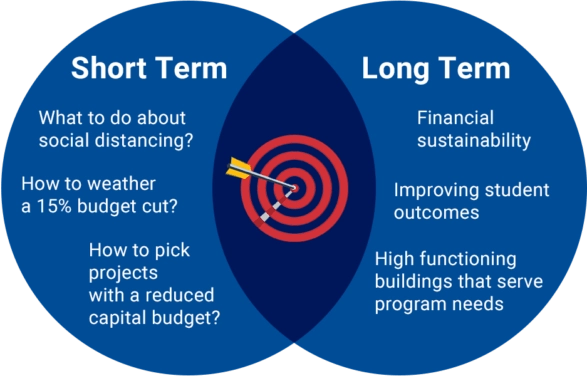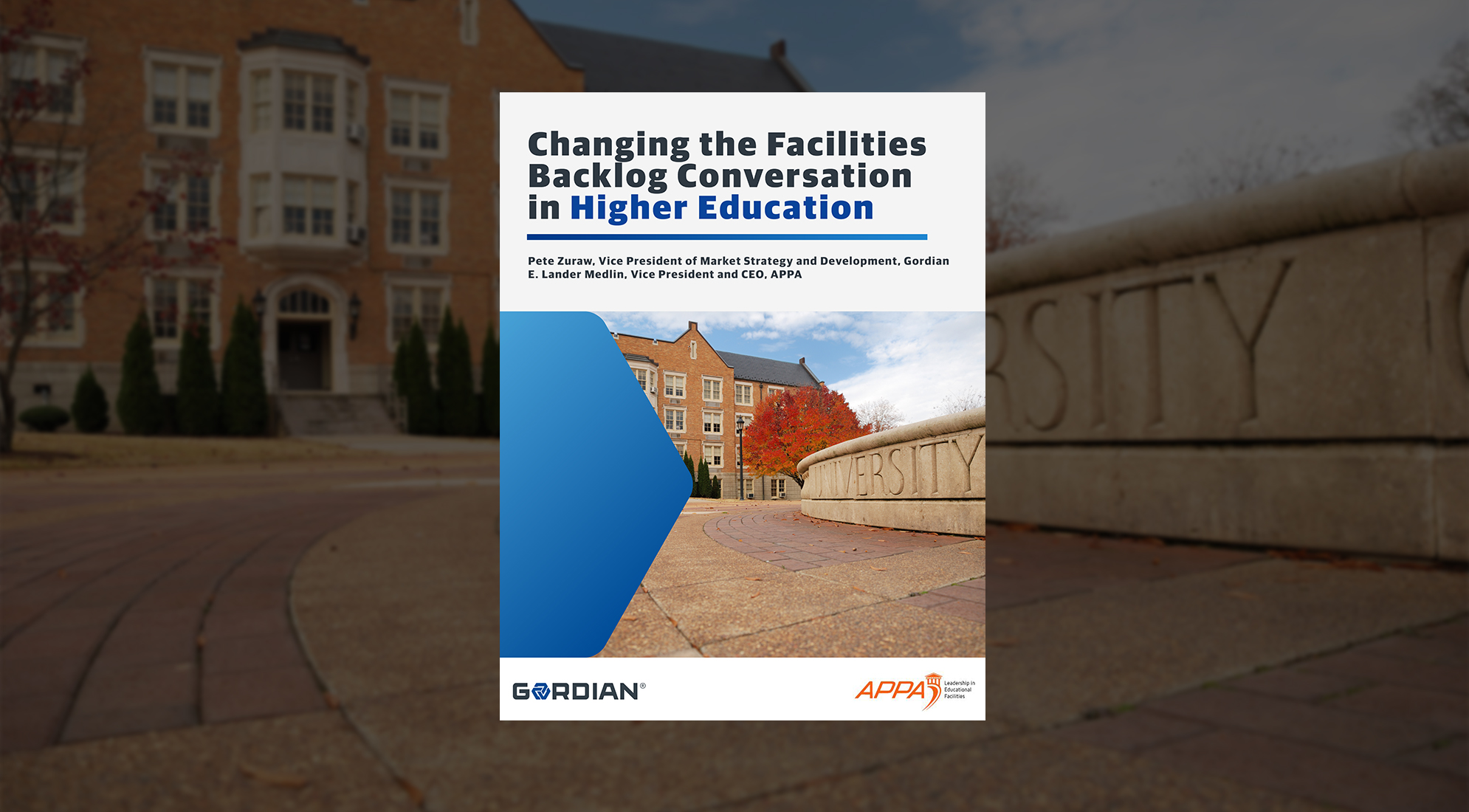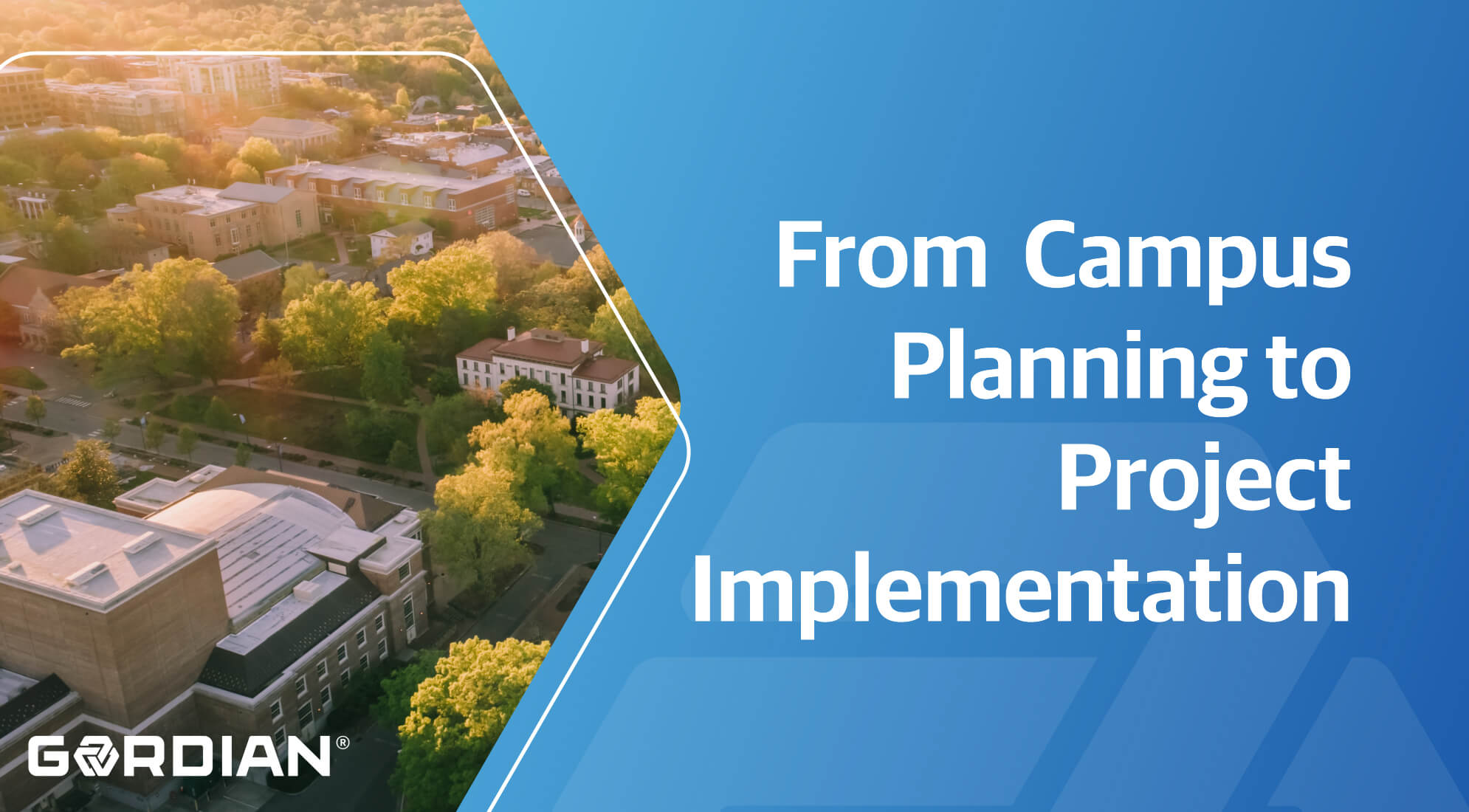Imagine with me for a minute: It’s after dinner, your sweet tooth is kicking in, and you really want to dip into that ice cream in the freezer. It seems harmless, and while your heart-healthy diet may cross your mind momentarily, the desire that is right in front of you feels much stronger. One scoop of ice cream can’t be that bad, right?
This familiar phenomenon of human nature drives many of us, and therefore the organizations we are part of, to react to the situation in front of us. Many of us will choose to solve an immediate need, like eating the proverbial scoop of ice cream, even if that action is at odds with our long-term vision, improving heart health. That’s just human nature, and it seeps into our professional lives.
When it comes to managing facilities on higher ed campuses, decision-makers must exercise discipline, and approach short-term budget decisions in a way that positions their institutions for future success. They have to keep the ice cream in the freezer.
If you’re a visual person like me, it can help to imagine drawing two circles – one around the short-term budget decisions you need to make and another around your long-term goals. Then, create a Venn diagram of the two circles. Now comes the hard part. Ask yourself how can you maximize the amount of time you spend in the middle zone, where the short-term and the long-term meet? Here’s my advice for finding the sweet spot and capitalizing on it.
Trimming the Edges: Service Changes
For institutions that are facing or modeling budget cuts, it is important to consider the service-level impact of those reductions and how the resulting changes could impact your long-term vision. Look for opportunities to reduce costs with minimal impact to service by cutting areas that are overstaffed to reduce waste, increase efficiency or leverage technology. You may consider a lower frequency of cleaning offices and emptying trash, more energy conscious temperature set points, maintaining fewer manicured landscape beds around buildings or designating low-mow areas on the grounds.
These, along with other potential changes, could certainly impact service output levels, but open communication will help you identify where service changes are acceptable to the campus community. It will be easier for users to stomach service reductions if they are aware how the changes will contribute to the financial viability of the institution. Recruit a diverse group of stakeholders to help test the boundaries of acceptable changes. This input will help generate user buy-in around short-term budget decisions and champion the message. If you know who your toughest critics of a suspected change will be, they should be the first people you include as key stakeholders.
Taking on a Bigger Piece of the Pie: Space
But what if potential cuts will create an unacceptable negative impact on service levels? While the strategies above can help trim costs at the margins, the real driver for facilities cost is space. The amount and type of space you have determines a target level for your facilities spending. And if you’re currently lacking the funds to meet that target line, you need to consider strategies to lower the line. To put it plainly, you need to divest from space.
While fealty to traditional space practices will inevitably threaten to loom over campuses fundamentally changed by the pandemic, it will be critical to apply lessons learned from the recent extreme example of what an overabundance of space can do to college budgets in the short term and the acceleration of deferred renewal long term. Our utilization data suggests that space reduction opportunities likely already exist on your campus.
Read more about the changing facilities organization in Higher Education, download our free report, “The State of Facilities in Higher Education, 11th Edition.”
Before the COVID-19 pandemic occurred, our database showed that teaching spaces had an average utilization of 60% across higher education. While your classrooms may be full on a Tuesday at 10:30, walking through campus at 8:00 a.m., in the late afternoon or on a Friday will give evidence to support these low utilization numbers. Though students and instructors may note these times as undesirable times to have class, they present potential solutions for continuing operations during trying times.
In addition, our space utilization data also shows an average position utilization of 62%. That means, while teaching spaces are in use, only 62% of chairs are filled with students. If models are based on classroom capacity alone, considering position utilization may unveil different parameters to work with when reimaging campus space priorities.
Utilization data can help justify space consolidation, which creates opportunities for divesting. When weighing divestment decisions, consider spaces that will also solve your operating budget woes, such as spaces with high deferred maintenance and high reactive maintenance demands. You can also consider small buildings that hamper your economies of scale and increase travel time for your facilities team. When a building becomes a candidate for divestment, remember to evaluate the value of the building to your institution’s programs and mission. Taking this into account helps protect long-term goals as you make space decisions.
The Sweet Spot: Future-Minded Short-Term Budget Decisions
Living in the middle of the Venn diagram may require sacrifices, fiscal discipline and a change in approach, but it creates a scenario where you will be better equipped to meet immediate budget needs while still working towards long-term vision. And just like our after-dinner dessert choices, taking a moment to think through the consequences of short-term budget decisions and make plans accordingly will position us to enjoy a more sustainable future.







